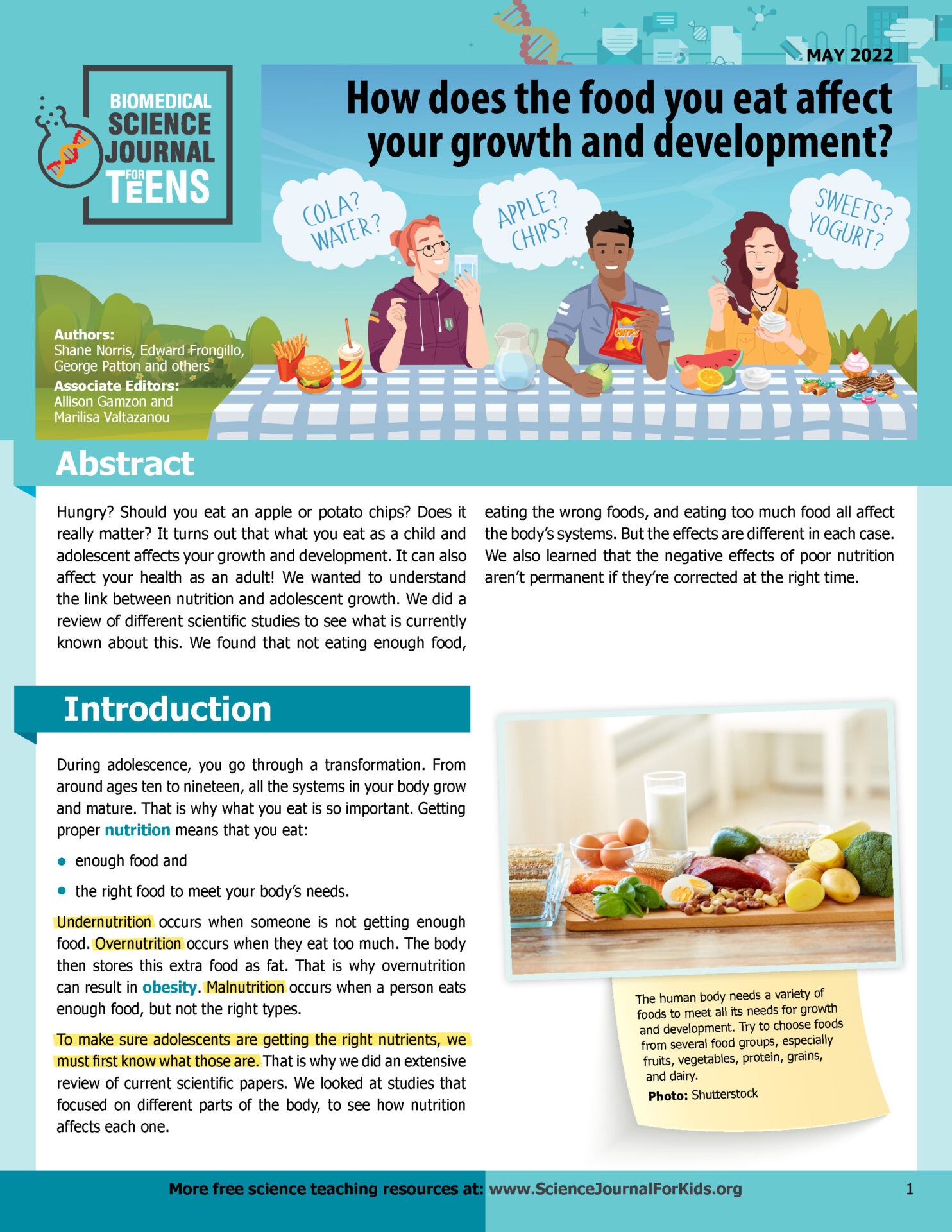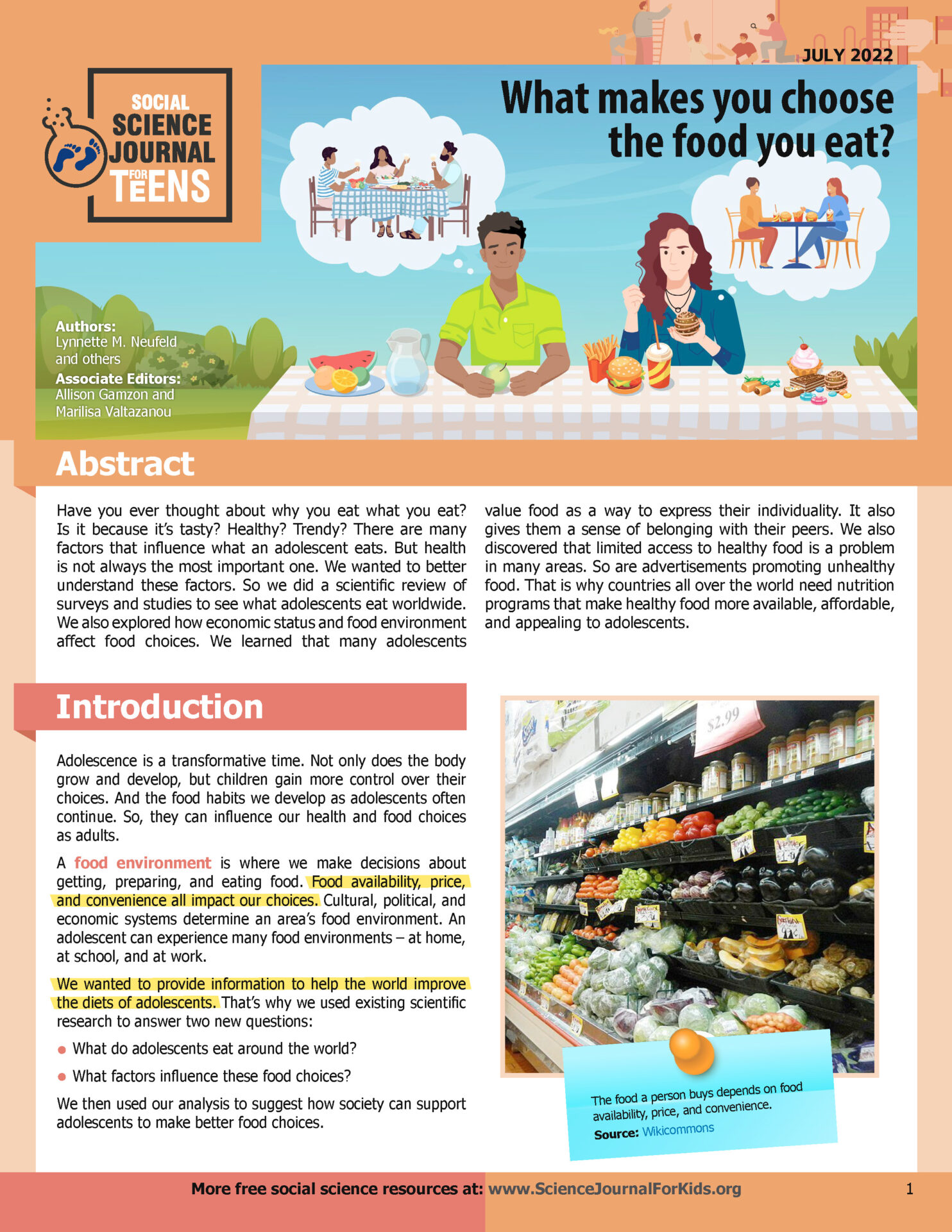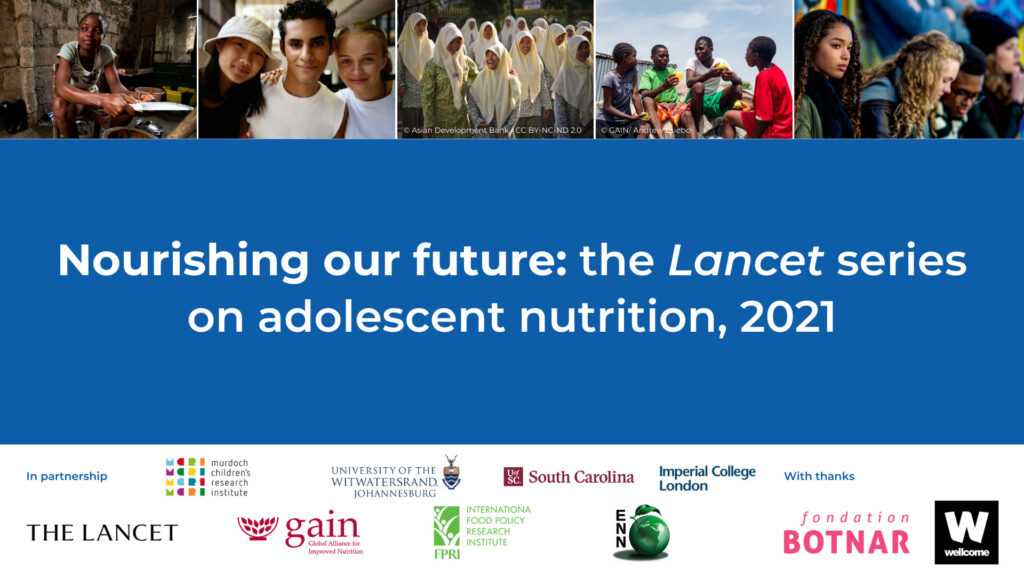Adolescent nutrition - a Lancet Series
Adolescence is a time of rapid changes in both physical growth and development and cognitive and emotional capacities. There rightly has been much emphasis on early childhood nutrition. However, adolescence is an additional important phase of risks and opportunities for healthy nutrition with lifelong and intergenerational consequences. Yet, this age group has been neglected in national and global plans and policies.
This Lancet Series of three papers and three commentaries was a first in bringing the health and nutrition communities together to focus on growth and nutrition across the adolescent years. The series highlights the effect of nutrition on adolescent growth and development, the role the food environment has on food choices, and which strategies and interventions might lead to healthy adolescent nutrition and growth.
Paper 1: Nutrition in adolescent growth and development
Lead authors: Professors Shane Norris and Edward Frongillo Jr
This paper highlights the role of nutrition in the growth and maturation of major physiological systems in adolescence. Poor nutrition affects the physical and cognitive capabilities acquired with consequences for health and productivity across the life-course, and into the next generation. Read the paper.
Paper 2: Food choice in transition: adolescent autonomy, agency, and the food environment
Lead author: Dr Lynnette Neufeld
This paper addresses the drivers of food choices, exploring the interactions among adolescent agency, autonomy, cultural context, and the food environment. The diversity and quality of available and affordable food differs vasty across countries, as does the scope for dietary choice. Read the paper.
Paper 3: Strategies and interventions for healthy adolescent growth, nutrition, and development
Lead authors: Dr Dougal Hargreaves, Emily Mates and Dr Purnima Menon
This paper examines the actions needed to create healthy adolescent food environments, including the roles that young people themselves may play in enhancing nutrition. Adolescent nutrition policy and programming will differ across food environments but in all places, needs to be intersectoral, with action across schools, social protection, health services, food retailers, local communities and families. Read the paper.
Translated recommendations
Youth and education friendly resources
Working with Science Journal for Kids & Teens, papers 1 and 2 have been adapted for students and teachers (as well as parents and/or guardians). Science Journal for Kids & Teens features freely downloadable peer-reviewed research papers rewritten in age-appropriate language. Each paper is accompanied by assessment questions and a teacher’s key.

How does the food you eat affect your growth and development?
Hungry? Should you eat an apple or potato chips? Does it really matter? It turns out that what you eat as a child and adolescent affects your growth and development. It can also affect your health as an adult! We reviewed different scientific studies to understand the link between nutrition and adolescent growth. We found that not eating enough food, eating the wrong foods, and eating too much food all affect the body’s systems. We also learned that the negative effects of poor nutrition aren’t permanent if they’re corrected at the right time. Also available in Arabic, Chinese, French, Russian, Spanish.
Watch the animation
With subtitles available in Arabic, Chinese, English, French, Russian, Spanish

What makes you choose the food you eat?
Have you ever thought about why you eat what you eat? Is it because it’s tasty? Healthy? Trendy? There are many factors that influence what an adolescent eats. But health is not always the most important one. We wanted to better understand these factors. So, we did a scientific review of surveys and studies to see what adolescents eat worldwide. We also explored how economic status and food environment affect food choices. We learned that many adolescents value food as a way to express their individuality. It also gives them a sense of belonging with their peers. We also discovered that limited access to healthy food is a problem in many areas. So are advertisements promoting unhealthy food. That is why countries all over the world need nutrition programs that make healthy food more available, affordable, and appealing to adolescents.
Also available in Arabic, Chinese, French, Russian, Spanish.
Watch the animation
With subtitles available in Arabic, Chinese, English, French, Russian, Spanish
Events
The findings from the Series has been presented at numerous events. Events that brought together leading young advocates, scientists and thought leaders to discuss the implications of the Lancet Series on Adolescent Nutrition, and the multi-sectoral actions required (including young people’s involvement) to enable effective policy and programmatic responses for sustainable food environments.
All the recordings and videos are available to watch here: https://vimeo.com/showcase/adolescentnutrition
Promote this work
We have developed an Adolescent Nutrition information sheet available here – https://doi.org/10.25374/MCRI.24083112.v1
Should you wish to share and promote this work online, we have created a trello board with images and sample post content – accessible via https://trello.com/b/DhU3taeI/adolescent-nutrition-toolkit
Acknowledgements
We would like to acknowledge the contributions of Professor George Patton, Dr Lynnette Neufeld, Professor Shane Norris, Professor Edward Frongillo Jr, Dr Dougal Hargreaves, Dr Purnima Menon, Emily Mates, Mariam Naguib, Shanshan He, Surabhi Dogra, Sophie Healy-Thow, Mike Khunga, Tanya Dimitrova and the Science Journal for Kids team, Kim Anastasiou, Pele Voncujovi, Tomoko Kato and Molly O’Sullivan.
Animations were produced by the Video & Animation Production Company (The VAPCO).
The adolescent nutrition series received funding support from Fondation Botnar and Wellcome.
